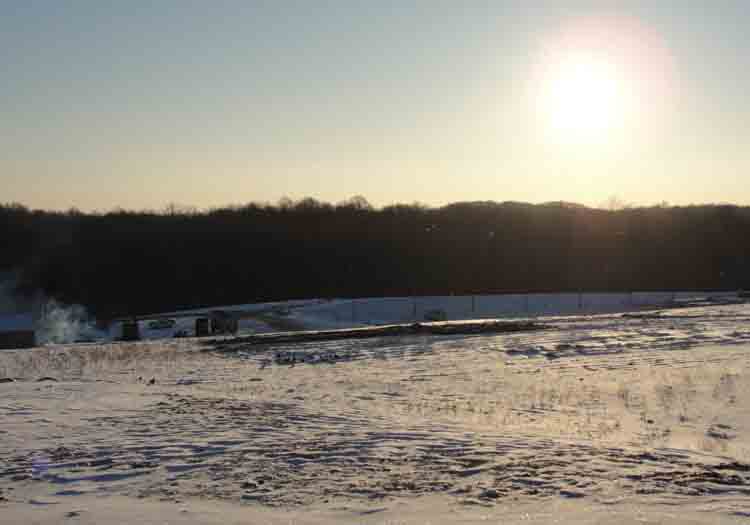People are afraid of what they don’t understand. Many people do not make the connection between the proper disposal of solid waste and protecting our health and environment. That’s because many people haven’t visited a landfill or taken the time to learn about them. Let’s take a look at some of the myths I have heard about landfills.
Medora Landfill in January
Myth No. 1: Landfills pollute the air.
Have you ever driven by a construction site and had a big cloud of dust cover your car? That would be a state and federal violation at a landfill. Rumpke is required to control and monitor all air emissions at our sites, including dust. The Clean Air Act and the National Ambient Air Quality Standards are enforced by the U.S. Environmental Protection Agency (EPA). Emissions at all Rumpke sites are well below the allowable limits, even considering the most sensitive populations, including children, elderly and people with asthma.
Myth No. 2: Landfills emit harmful gases.
As garbage decomposes inside a landfill, it produces a gas that is about 50 percent carbon dioxide and 50 percent methane. Modern landfills are constructed with gas collection systems to safely remove the gases, both of which occur naturally in the air and are not harmful. At two Rumpke facilities, the gas is recovered, converted to electricity or pipeline quality natural gas, and used to power local homes and businesses.
Myth No. 3: Landfills pollute the ground water.
Modern sanitary landfills are built to protect ground water. This is done with a protective liner, and leachate collection system. Groundwater samples are tested regularly by a third party agency. Watch a video about protective landfill liners.
Myth No. 4: Landfills are bad for the environment.
Modern landfills are designed to protect the environment by ensuring waste is contained properly. In fact, the EPA considers landfills to be the most environmentally safe way to dispose of trash. That said, we all have a shared interest in conserving landfill space by recycling.
Myth No. 5: Landfills ruin plant and wildlife habitat.
Our properties are used for more than just landfill disposal. For example, the Medora Landfill consists of 512 acres, but only 171 acres is used for the landfill. The rest of the land includes wetlands, grasslands and wooded areas that are home to many native plant species and wildlife. When a landfill has been properly closed, it can be used for hay production, or become a green space for wildlife habitat or a recreational park.
Myth No. 6: Landfills pose health risks for neighbors.
Landfills are highly-engineered structures designed to protect the health and safety of the community. Rumpke continuously completes internal audits in addition to being regularly inspected by local, state and federal health and environmental agencies. Due to these measures there are no known links between health risks and landfills.
About the author: Ralph Collins is manager of the Medora Landfill in Jackson County, Ind.